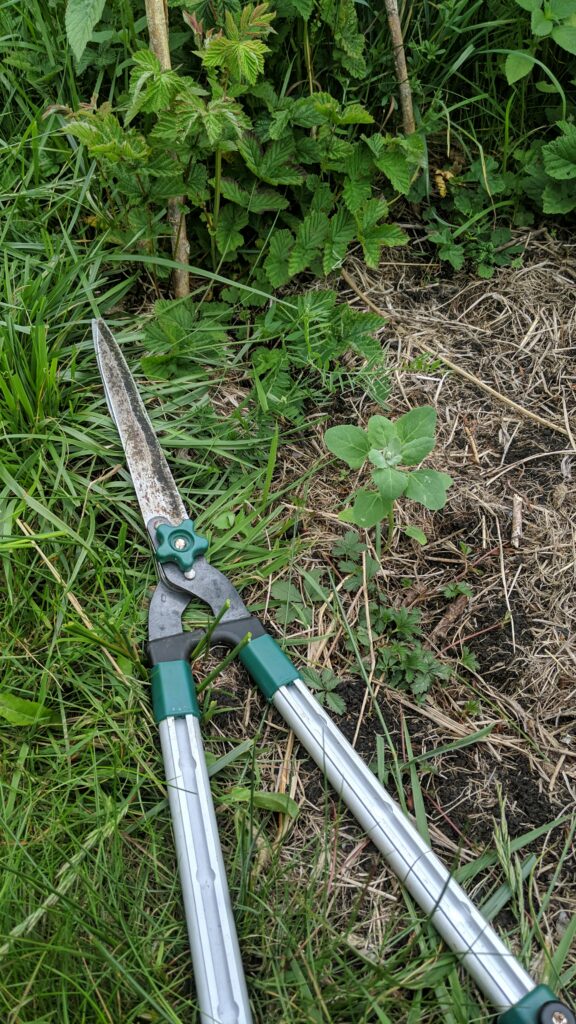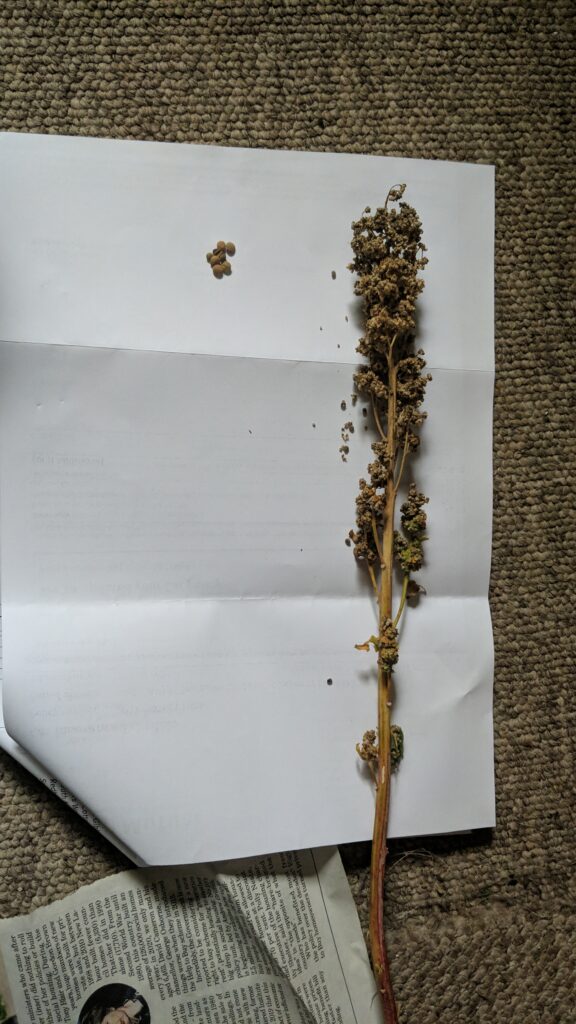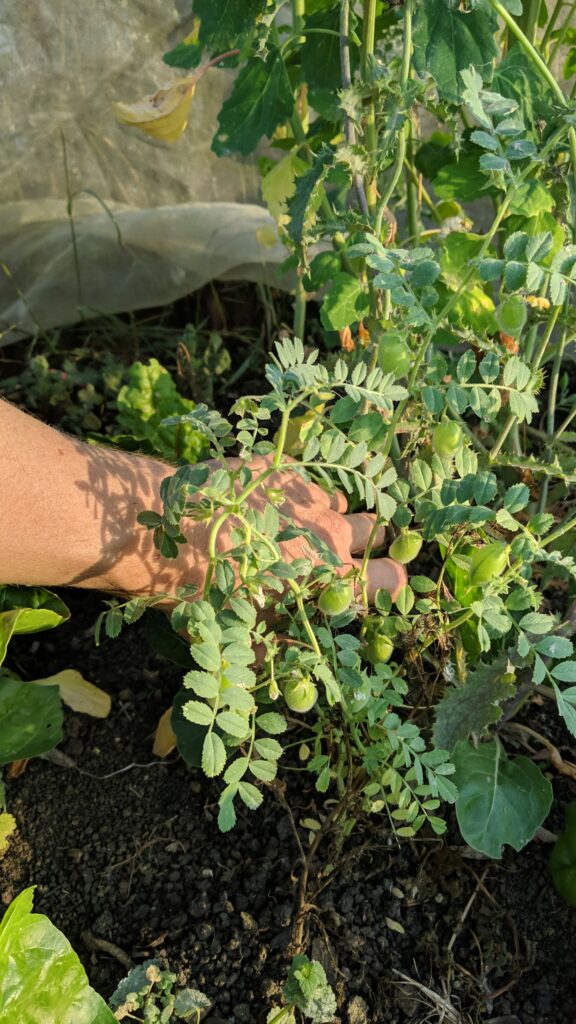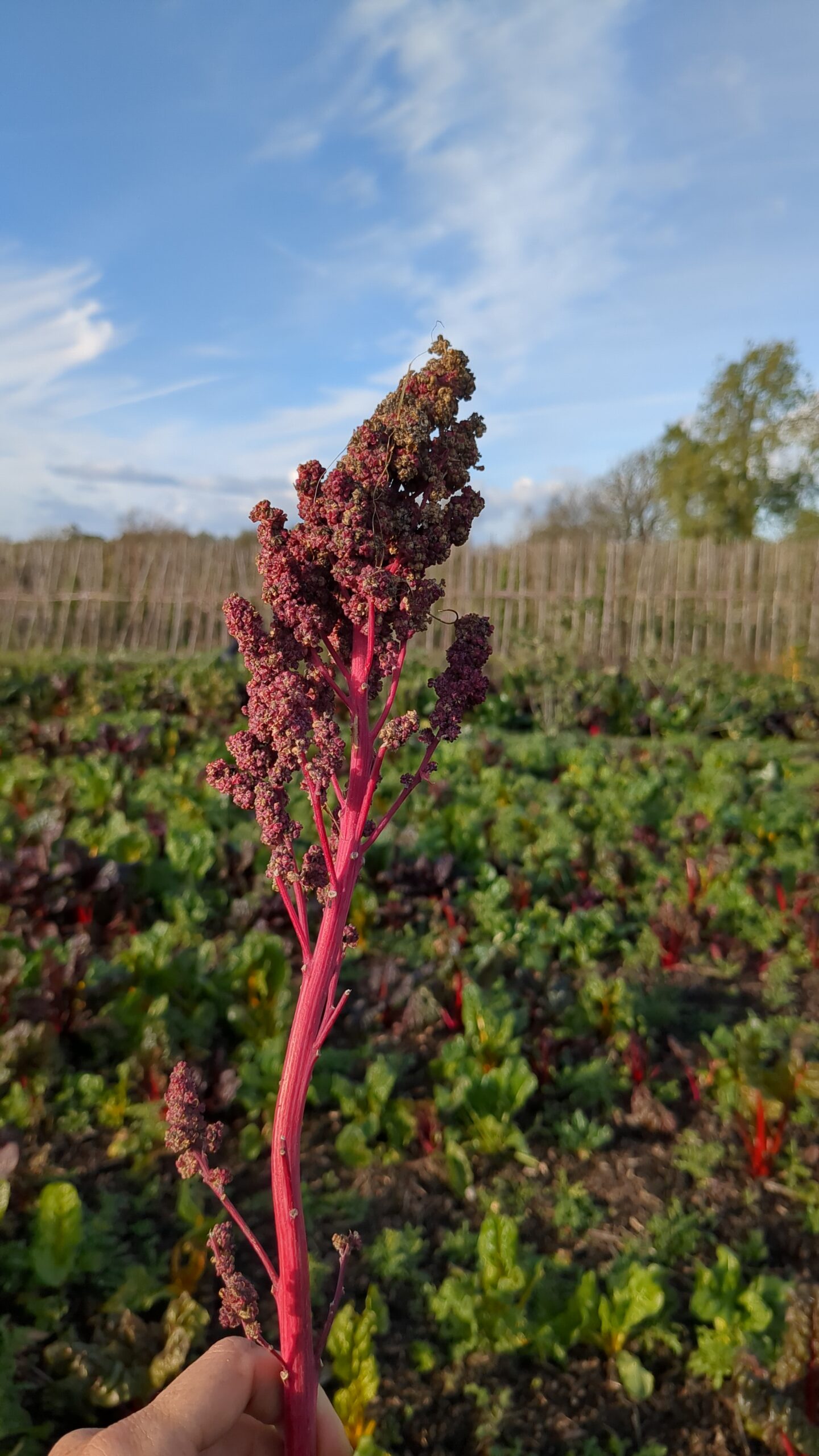Despite a total failure in our small trial beds in 2021 we decided to have another go at growing quinoa and lentils in 2022. For 2021 we tried repeated sowings over the April and May planting season but there was very little sign of growth. Not sure if that was due to something eating the seed before they germinated or the seedlings as they emerged. We had also planted some quinoa seed in soil blocks, and they all emerged and we planted them out in the beds after a couple of weeks but they also didnt survive long. The site is a bit unusual as its on the somerset levels and has 15cm of lovely black top soil covering 15cm of clay with at least 4m of peat underneath.
We had previously had huge amounts of fat hen growing on the site from the weed seeds brought in with some very old cow manure we got from the new neighbours when they cleared a pile the previous owner had left behind. The frequent deer visitors didnt appear interested in the fat hen, possibly because of the soapy compounds that these plants produce.
Fat hen is so closely related to quinoa that they can cross breed. So we had hoped it was a nod towards a future quinoa success. But things havent gone so well.
This year we decided to hedge our bets by sowing trial plots of quinoa, lentils and chick peas at two different sites. Againa few small test beds down on the levels at Meadowsweet Meadow, but also some larger plantings on the clayey higher ground up at Plotgate Community Farm
Despite repeated sowings the trial at the meadow was again pretty much a total failure a sole tiny quinoa plant produced a micro crop of seed. A few lentil plants lasted the season but stayed tiny and produced less than a dozen lentils between them. Despite a late start the pumpkins we grew at the meadow did magnificently, benefitting from a hot summer and the endless moisture held in the deep peat layer below the top soil.


Things went a bit better at Plotgate Community Farm where we planted a few 20 meter rows. We again reseeded some rows as there was patchy seedling emergence.

We tried covering half the beds with mesh to keep a bit more moisture in the soil and stop the birds from picking about in them, but its possible that this made a nicer, safer environment for the slugs and/or mice as more plants survived outside the mesh.
Again it wasnt a great crop. The lentils largely didnt make it past seedlings. The few chick peas that lasted the season were well nibbled throughout and the sparse peas produced got munched before they were cropped.

Many of the quinoa plants made decent sized heads of seed, but the rows were pretty scarcely populated. We picked a few carrier bags of seed heads early November and hung them out up on string lines under cover to air dry. Possibly because of the high levels of humidity due to the wet weather sadly most of the seed heads went mouldy. In the future it would likely be safer to get the seed off the stems and winnow away the other plant matter then dry the seed with forced air and/or some gentle heat.
